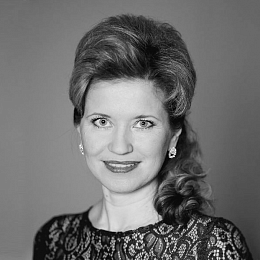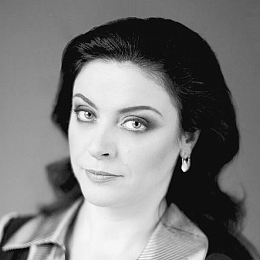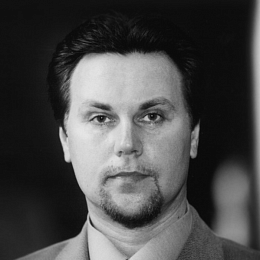stage
Artists

Credits
Libretto by Lorenzo Da Ponte after the play by Pierre Beaumarchais La folle journée, ou le Mariage de Figaro
Music Director: Dmitri Jurowski
Stage Director, Author of artistic concept: Vyacheslav Starodubtsev
Set Designers: Timur Guliaev, Vyacheslav Starodubtsev
Costume Designer: Zhanna Usacheva
Video Content Designer: Vadim Dulenko
Lighting Designer: Sergei Skornetsky
Stage Movement Designer: Sergei Zakharin
Chorus Master, Co-director: Vyacheslav Podyelsky
Conductor: Eldar Nagiev
Chorus Master: Sergei Tenitilov
Assistant Stage Directors: Igor Bondarenko, Nikolai Natsybulin
Assistant Stage Movement Designer: Anna Ryabukhina
3 hours
one interval
The Marriage of Figaro is Wolfgang Amadeus Mozart’s comedic opera, composed after the play by Pierre Beaumarchais La folle journée, ou le Mariage de Figaro. The literary source for this production was significantly amended by an Italian poet and translator Lorenzo Da Ponte. The Marriage of Figaro is still one of the most beloved operas in the world – it combines intrigues, amicable characters and amazing playful atmosphere with heart-stirring, deeply dramatic moments.
The action takes plays at Count Almaviva’s mansion, right before the upcoming marriage of Figaro and Susanna. Figaro, a cunning and opportunistic assistant to the Count, learns from his fiancée (Countess Rosina’s servant) about the Count’s advances towards her. Figaro vows to thwart his master’s plans by engaging his friends and even the Countess into a web of intrigues.
NOVAT presents Vyacheslav Starodubtsev’s rendition of The Marriage of Figaro. Music Director of the production – Dmitri Jurowski.
Act 1
Figaro, the Count’s valet, is preparing for his wedding with Susanna the housemaid. While examining their future abode Figaro finds out that the Count has his own romantic plans for his bride. Moreover, Basilio, the music teacher, supports the Count’s advances.
The second problem appears out of thin air shaped as housekeeper Marcellina: Figaro once borrowed some money from her and promised to marry her, should he fail to pay the debt. She wants to restore justice and have Figaro as her husband. Her angle is supported by Dr. Bartolo, who’s been harbouring a grudge against a quick-witted servant for a few years.
Cherubino, a young page, also resides in the mansion. He constantly fails love affairs. Recently he has been spotted with the gardener’s daughter and the Count is planning to banish him. He hopes to garner the Countess’ support through Susanna. He has just finished describing his situation to Susanna as the Count appears with an intent to ask her out on a date. Cherubino hides, while keeping eavesdropping on the two. Basilio appears suddenly, and now the Count has to hide.
He can’t stay hidden for too long since Basilio speaks of Cherubino’s feelings to the Countess. He jumps out of his hiding place and faces all of them, including the page, who was «promoted to the rank of officer» as a punishment and sent to war.
Act 2
The Countess, disregarded by her husband, decides to support Figaro and Susanna so they could finally have a wedding and she could return her promiscuous husband. The Count receives an anonymous letter aimed at igniting jealousy with him. The second letter invites him to a date with Susanna, who is supposed to be played by Cherubino disguised as a girl. Susanna and the Countess are listening to Cherubino’s songs when suddenly the Count rushes into the room in total outrage.
Cherubino manages to jump out of the window, so the Count catches Susanna only. He almost got away with it, but Antonio the gardener saw him. The Count suspects treason and wants to take revenge. Nasty plotters Bartolo, Marcellina and Basilio appear just about the right time to support the Count. Now he can validate Marcellina’s prenuptial agreement and Susanna will stay single.
Act 3
Susanna gives her consent to meet the Count pro forma. But as soon as the Count exposes deception, he decides to best Figaro by any means. Don Curzio is summoned to “sentence” Figaro to this marriage. Moreover, it becomes known that Figaro is a son to Marcellina and Bartolo.
Meanwhile, the Countess changes strategy: she decides to wear Susanna’s dress for the housemaid’s date with the Count.
The bridal procession begins.
While everybody is celebrating the betrothal of Figaro with Susanna and Bartolo with Marcellina, Susanna sneaks a letter to the Count, which was actually composed by the Countess.
Act 4
Barbarina tells Figaro about Susanna’s secret date with the Count. Mad with jealousy, Figaro joins Bartolo and Basilio to expose his fiancée.
The countess and Susanna arrive, dressed in each other’s clothes. Their disguise, amplified by the mystery of a dim garden creates even more confusion: Cherubino takes the Countess for Susanna, the Count confesses his love to his wife, whom he confused with the housemaid, and Figaro induces the Count with jealousy by his attempts to seduce the fake Countess.
Enraged, the Count assembles the household for the punishment of his “unfaithful” wife, but it turns out that he’s the one, who should seek forgiveness with the Countess.
“The crazy day” ends up with total forgiveness and festive celebration.











































